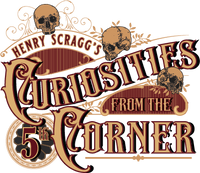This is a real human skull head dress created and worn by the Ekoi people. Ekoi people, also known as Ejagham, are an ethnic group in the extreme south of Nigeria and extending eastward into the southwest region of Cameroon.Headdresses were worn for both festive and important ceremonial occasions. Deaths of high-ranking society members would be marked by elaborate commemorative funerals at which the headdresses would be worn by an accomplished dancer dressed in a full length gown, adorned with the society's important paraphernalia, and accompanied by specific musical instruments. There are three overall types: helmet masks that cover the wearer's head entirely, masks that cover only the face, and headdresses that, like this one, are attached to basketry caps worn on top of the head.
In the eye sockets are Cowrie shells and two Manilla’s.
Cowrie shells were once one of the most important symbols of wealth and money for centuries. It was a universal form of currency whose relevance weaved into the cultural fibre of Ancient African societies. The Ghanaian word “cedi” is Fanti language translation of “cowries”—and it also happens to be the name of the country’s unit of currency. The shells are known to bring good luck and to protect the spirit of the wearer, many tribes use them in spiritual ceremonies. They also are a sign of femininity and fertility, with women often wearing them not only to help them conceive, but to help them give birth safely. Because of their unique vulva-like appearance and because they come from the ocean, it is a sacred symbol of Love Sea Goddesses in various cultures. According to African legend, the cowrie shells represent the highly powerful Goddess protection as well as connected with the strength and dense power of the Ocean. They are also used for divination, female magic, love and sex magic work.
Manilla, a form of currency that looks like a horseshoe type ring. Often made of copper or bronze is a bangle like object. Copper bracelets and leg bands were the principal 'money' and they were usually worn by women to display their husband's wealth. Noting that they were in demand they were then mass produced to be used for trade with the west African tribes. Those produced were not to be worn, but smaller and simply for trade purposes. These were used for over half of a millennium from the 1400s as the most common currency used between European traders and the tribes of west Africa. They were often produced in Europe especially for use to be traded by the Portuguese with west Africa. By the early 16th century it was common in the slave trade for bearers to carry manillas to Africa's coast, and gradually manillas became the principal currency of this trade. The Portuguese were soon supplanted aside by the British, French, and Dutch, all of whom had labor-intensive plantations in the West Indies, and later by the Americans. A typical voyage took manillas and utilitarian brass objects such as pans and basins to Western Africa, where they were exchanged for slaves. The price of a slave, expressed in manillas varied considerably according to time, place, and the specific type of manilla offered. Many of these pieces were traded with the “Oba” meaning ruler of west Africa in exchange for slaves, some of these many pieces traded were melted down and used to create the “Benin bronzes” a vast collection of more than a thousand metal sculptures and plaques that decorated the palace of the kingdom of Benin.

